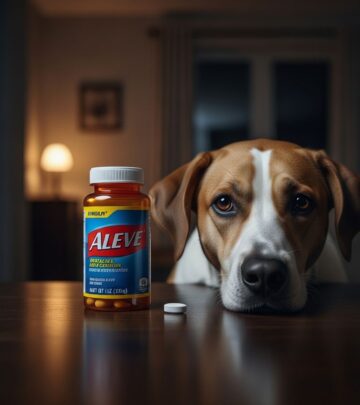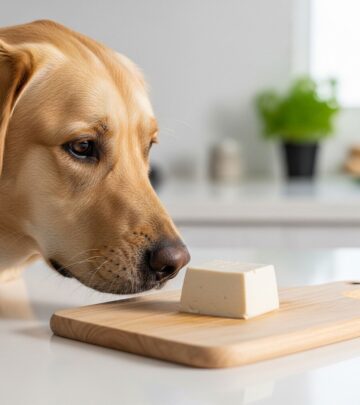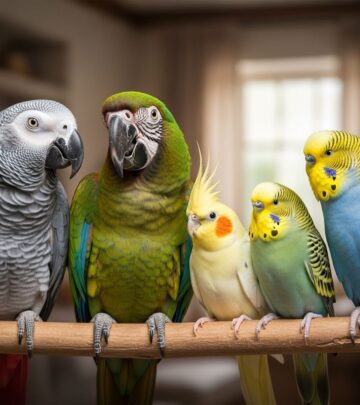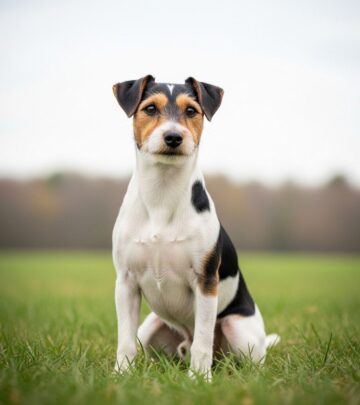Warning Signs of Dehydration in Dogs: What Every Owner Should Know
Proper fluid balance supports your companion’s energy, joint comfort, and wellbeing.
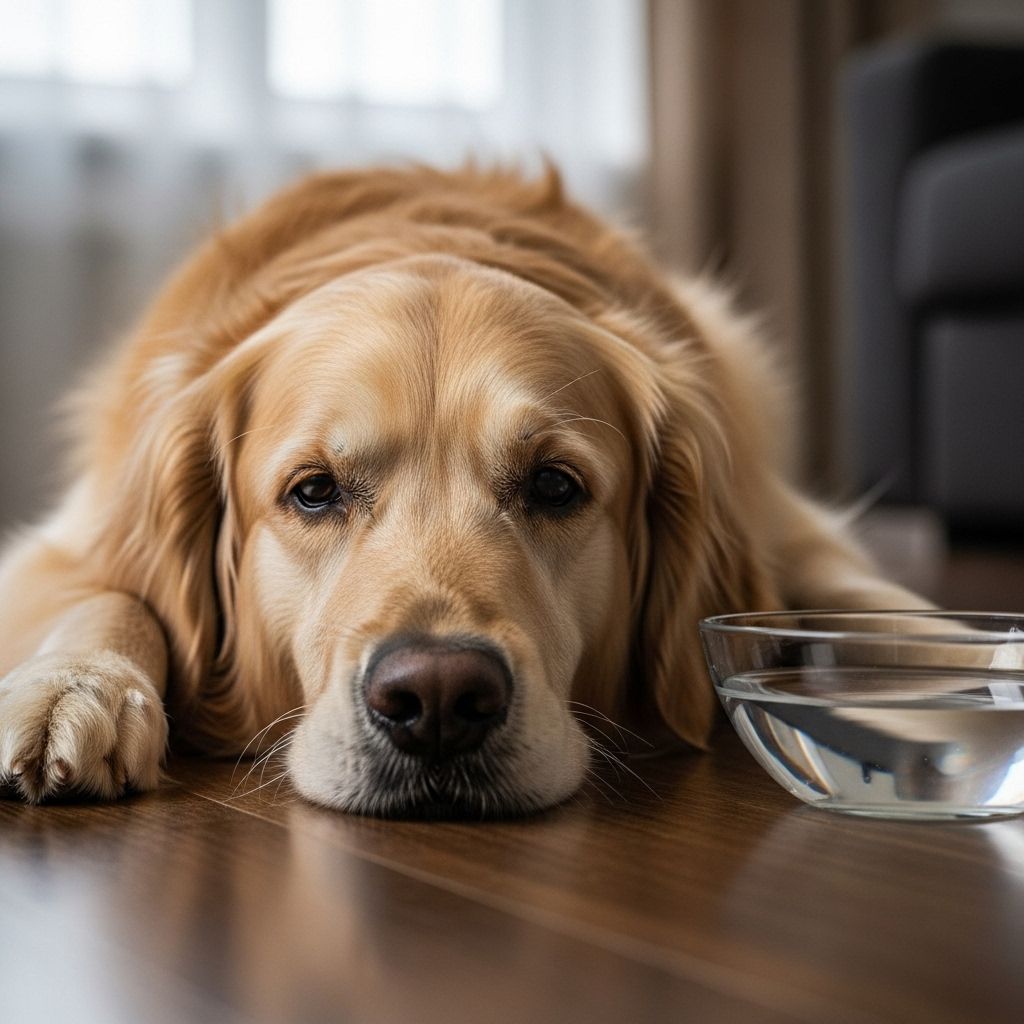
Image: HearthJunction Design Team
Water is essential for every living creature, and dogs are no exception. Ensuring your dog remains well-hydrated supports their organ function, joint health, temperature regulation, and overall wellbeing. Unfortunately, our canine companions can’t communicate thirst directly, making it crucial for owners to recognize the warning signs of dehydration in dogs so that problems can be addressed before they escalate.
Why Is Hydration Critical for Dogs?
Hydration is fundamental for dogs due to several reasons:
- Regulates body temperature
- Lubricates joints and tissues
- Supports digestion and nutrient absorption
- Cushions and protects internal organs
- Facilitates healthy blood flow
Even mild dehydration can lead to serious health problems and reduce your dog’s quality of life.
What Are the Causes of Dehydration in Dogs?
Dehydration occurs when your dog’s body loses more fluids than it takes in. Common causes include:
- Insufficient water intake
- Excessive panting or drooling (especially in hot weather)
- Vomiting and diarrhea (from illness or dietary indiscretion)
- Kidney disease or diabetes
- Fever or infection
- Prolonged exercise or exposure to heat
Understanding these causes can help you take proactive steps to prevent dehydration in your dog.
What Are the Symptoms of Canine Dehydration?
Recognizing the symptoms of dehydration early is vital for dog owners. According to Dr. Jerry Klein, Chief Veterinary Officer for the American Kennel Club, warning signs of canine dehydration include:
- Loss of skin elasticity
- Loss of appetite
- Vomiting (with or without diarrhea)
- Reduced energy levels and lethargy
- Panting
- Sunken, dry-looking eyes
- Dry nose
- Dry, sticky gums
- Thick saliva
| Symptom | Description |
|---|---|
| Loss of skin elasticity | Skin stays tented or takes longer to return to normal after being gently pinched |
| Loss of appetite | Dog refuses food or eats less than usual |
| Vomiting/Diarrhea | Fluid loss through the digestive system leads to rapid dehydration |
| Lethargy/Fatigue | Reduced energy, unwillingness to exercise or play |
| Panting | Excess panting not related to normal heat regulation |
| Sunken, dry-looking eyes | Eyes appear deeper in sockets due to fluid loss |
| Dry nose | Nose feels warm and dry to the touch |
| Dry, sticky gums | Gums lack moisture, sticking to touch |
| Thick saliva | Saliva appears stringy or thicker than normal |
Other signs that might indicate dehydration include urinating less frequently and excessive drooling or thick saliva.
How to Test for Dehydration at Home
There are simple tests you can perform at home to evaluate your dog’s level of hydration:
1. The Skin Elasticity Test
- Gently pinch and pull up some skin between your dog’s shoulder blades.
- Release the skin and observe how quickly it flattens back.
- In well-hydrated dogs, the skin springs back immediately.
- If the skin returns slowly or remains tented, your dog may be dehydrated.
Tip: Try the test when your dog is healthy to understand their normal skin elasticity, especially for wrinkly breeds like Bulldogs or Neapolitan Mastiffs, where skin behavior may differ.
2. Gum Check and Capillary Refill Test
- LIFT your dog’s lip and touch the gums.
- Healthy gums feel moist and slick, while dehydrated gums are sticky, dry, or tacking to your finger.
- To check capillary refill, press gently on the gums until they blanch white. Count how quickly color returns:
- If it takes longer than normal (more than 2 seconds), dehydration may be present.
3. Observe Behavior and Appearance
- Lethargy, weakness, and reluctance to move or exercise can signal fluid loss.
- Sunken eyes and a dull, dry nose are additional visible clues.
What to Do if You Suspect Dehydration
If you identify one or more symptoms of dehydration in your dog, take action quickly:
- Offer fresh, clean water immediately. Allow your dog to drink slowly—overzealous drinking can cause vomiting.
- Move your dog to a cool, shaded, and calm environment to minimize further fluid loss, especially if dehydration was caused by heat or exercise.
- Monitor for severe signs, such as excessive vomiting/diarrhea, collapse, unresponsiveness, or refusal to drink.
- If severe signs appear, contact your veterinarian immediately. Veterinary intervention is essential for moderate to severe dehydration and underlying conditions.
When to Call the Vet
Sometimes, dehydration can progress rapidly or be a sign of a serious underlying issue. Seek veterinary help if you observe:
- Extremely sunken eyes
- Lack of urination or dark urine
- Collapse or unsteady walking
- Persistent vomiting or diarrhea
- Refusal to drink despite access to water
- Gums that remain pale for several seconds after pressing
Veterinarians may administer intravenous or subcutaneous fluids and address any underlying illnesses contributing to dehydration.
How Can You Prevent Dehydration in Dogs?
Prevention is always better than cure. Follow these tips to maintain healthy hydration for your dog:
- Ensure water is always available: Keep fresh, clean water accessible 24/7 both at home and while traveling.
- Monitor water intake: Note how much your dog usually drinks so you can quickly spot changes.
- Provide extra water during activity or heat: Increase accessibility and encourage more frequent sips during exercise, after play, or on hot days.
- Feed wet food if needed: For dogs who don’t drink much, moisten their dry kibble with water or offer some canned dog food.
- Bring water on walks: Carry a portable bowl or bottle when hiking or exploring outdoors.
- Pay attention to higher-risk dogs: Puppies, seniors, small breeds, nursing dogs, and those with chronic illnesses need extra monitoring.
Dogs at Higher Risk for Dehydration
- Puppies and senior dogs
- Breeds with thick or heavy coats, or brachycephalic (flat-faced) breeds
- Dogs with chronic diseases (kidney disease, diabetes, Cushing’s syndrome)
- Pregnant or nursing females
- Active dogs and those exposed to high temperatures
Hydration Tips for Hot Weather
Summer heat and exercise can lead to rapid dehydration. To keep your pup safe:
- Walk early in the morning or late in the evening when temperatures are cooler.
- Supply shade and water during outdoor play.
- Avoid leaving dogs in hot cars, even for a short period.
- Use pet-safe electrolyte solutions as recommended by your veterinarian.
Frequently Asked Questions (FAQs) About Dog Dehydration
How much water should my dog drink each day?
A general rule of thumb is about 1 ounce of water per pound of body weight per day. Active dogs, those in hot climates, or dogs eating dry kibble may need more. Monitor your dog’s bowl and consult with your vet for specific needs.
Can I give my dog sports drinks or human electrolyte solutions?
Avoid giving your dog human sports drinks unless directed by your veterinarian, as they contain sugars and additives not suitable for dogs. Your vet can recommend safe products if supplementation is needed.
Is persistent panting always a sign of dehydration?
Not always. Dogs pant to cool down naturally, but if panting is excessive and accompanied by other dehydration symptoms (like dry gums, lethargy, or sunken eyes), it warrants concern.
How can I encourage a reluctant drinker?
Try adding a splash of low-sodium chicken broth to the water, providing ice cubes, keeping water bowls clean, and offering wet food. Some dogs also enjoy pet-safe water fountains.
What should I do if my dog is mildly dehydrated?
Offer small sips of water and move your dog to a cool location. Monitor for improvement. If symptoms persist or worsen, call your veterinarian for guidance.
Further Resources
Education and preparedness are the best tools for keeping your dog healthy. For detailed recommendations or emergency protocols, always consult your veterinarian or a trusted animal healthcare provider.
References
- https://www.akc.org/expert-advice/health/warning-signs-dehydration-dogs/
- https://nowfresh.com/en-eu/blog/dehydration-in-dogs
- https://buffalohealthyliving.com/signs-your-dog-may-be-dehydrated/
- https://www.doodycalls.com/articles/blog/dog-health-digestion/preventing-dehydration-in-dogs-during-the-summer/
- https://www.akc.org/expert-advice/health/puppy-drinking-enough-water/
Read full bio of Srija Burman


